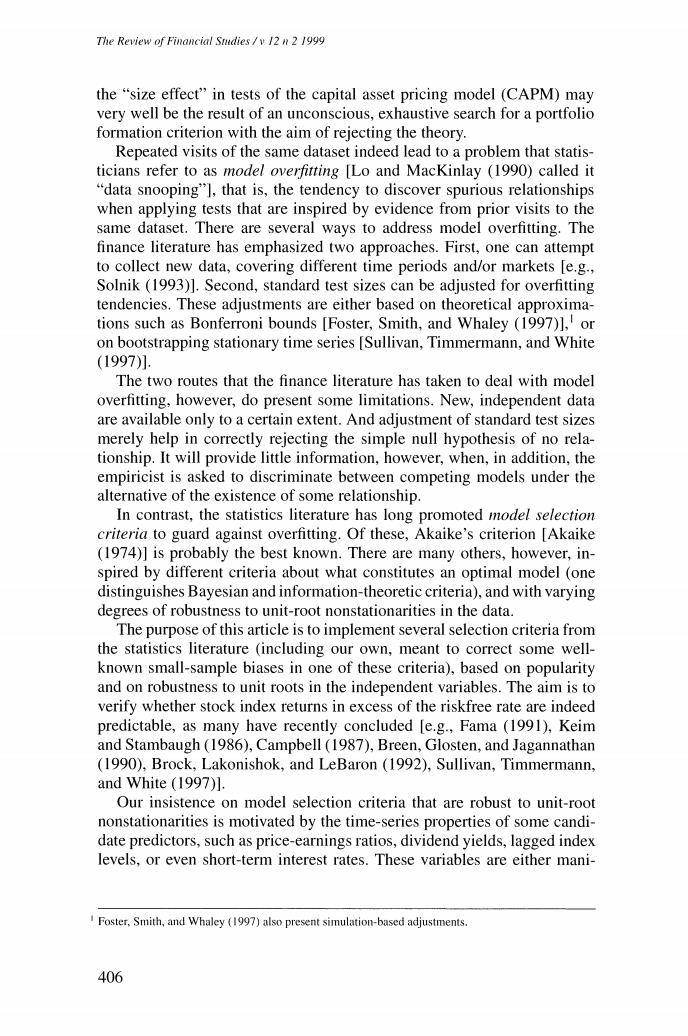正在加载图片...

The Review of Financial Smdies /v 12 n 2 1999 the "size effect"in tests of the capital asset pricing model (CAPM)may very well be the result of an unconscious,exhaustive search for a portfolio formation criterion with the aim of rejecting the theory. Repeated visits of the same dataset indeed lead to a problem that statis- ticians refer to as model overfitting [Lo and MacKinlay (1990)called it "data snooping"],that is,the tendency to discover spurious relationships when applying tests that are inspired by evidence from prior visits to the same dataset.There are several ways to address model overfitting.The finance literature has emphasized two approaches.First,one can attempt to collect new data,covering different time periods and/or markets [e.g., Solnik (1993)].Second,standard test sizes can be adjusted for overfitting tendencies.These adjustments are either based on theoretical approxima- tions such as Bonferroni bounds [Foster,Smith,and Whaley (1997)],or on bootstrapping stationary time series [Sullivan,Timmermann,and White (1997)1. The two routes that the finance literature has taken to deal with model overfitting,however,do present some limitations.New,independent data are available only to a certain extent.And adjustment of standard test sizes merely help in correctly rejecting the simple null hypothesis of no rela- tionship.It will provide little information,however,when,in addition,the empiricist is asked to discriminate between competing models under the alternative of the existence of some relationship. In contrast,the statistics literature has long promoted model selection criteria to guard against overfitting.Of these,Akaike's criterion [Akaike (1974)]is probably the best known.There are many others,however,in- spired by different criteria about what constitutes an optimal model (one distinguishes Bayesian and information-theoretic criteria),and with varying degrees of robustness to unit-root nonstationarities in the data. The purpose of this article is to implement several selection criteria from the statistics literature (including our own,meant to correct some well- known small-sample biases in one of these criteria),based on popularity and on robustness to unit roots in the independent variables.The aim is to verify whether stock index returns in excess of the riskfree rate are indeed predictable,as many have recently concluded [e.g.,Fama (1991),Keim and Stambaugh (1986),Campbell (1987),Breen,Glosten,and Jagannathan (1990),Brock,Lakonishok,and LeBaron (1992),Sullivan,Timmermann, and White (1997)]. Our insistence on model selection criteria that are robust to unit-root nonstationarities is motivated by the time-series properties of some candi- date predictors,such as price-earnings ratios,dividend yields,lagged index levels,or even short-term interest rates.These variables are either mani- Foster,Smith,and Whaley (1997)also present simulation-based adjustments. 406